Key takeaways:
- Conceptual releases blend art and music, providing immersive narratives that engage listeners on multiple levels.
- Effective promotion strategies include storytelling through social media, collaboration with visual artists, and hosting interactive listening events.
- Creating a cohesive narrative flow and being vulnerable in songwriting fosters deeper connections with audiences.
- Researching themes and collaborating with others enriches the creative process and enhances the overall impact of a conceptual release.
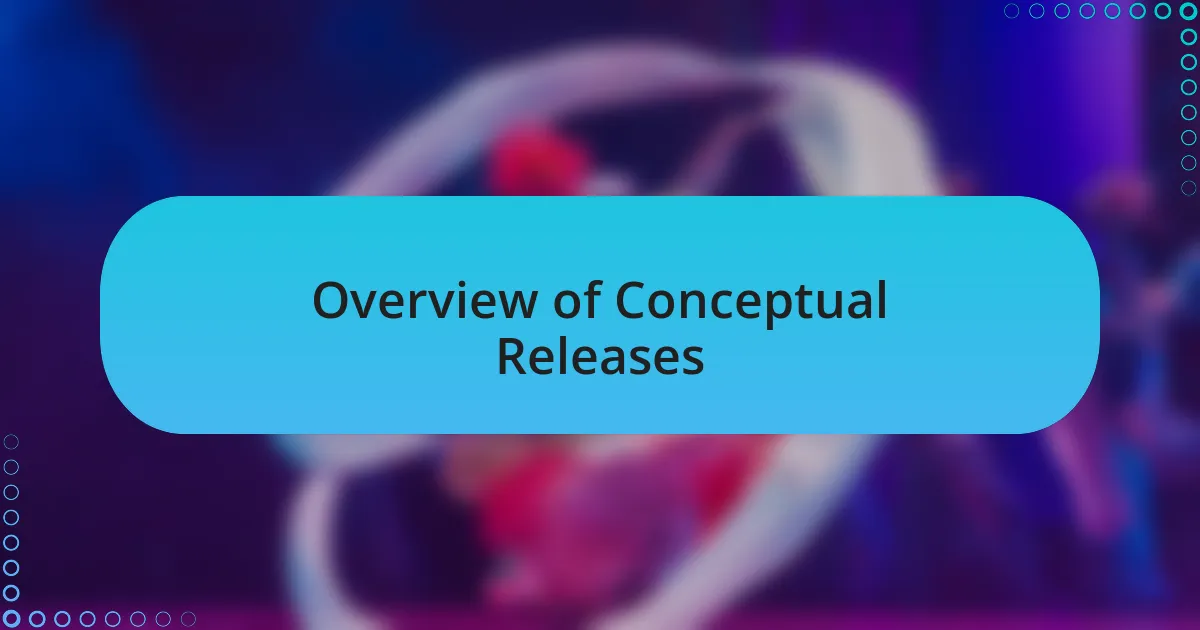
Overview of Conceptual Releases
Conceptual releases are fascinating in their ability to blend art and music into a cohesive experience. They often challenge the listener’s perception of what an album can be, bringing forth a narrative or theme that resonates on multiple levels. I remember when I first encountered a conceptual album, feeling as if I was embarking on an emotional journey rather than just listening to music—a unique experience that reshaped my understanding of artistic expression.
The beauty of conceptual releases lies in their potential for storytelling. Artists often weave personal experiences, societal commentary, or even fictional narratives into their music. I once followed a band that built an entire album around a dystopian story; every track felt like a chapter in a gripping novel. It left me pondering the deeper meanings behind the songs—an immersive engagement that traditional releases rarely offer.
Have you ever found yourself pondering the connection between the tracks on a conceptual album? It often feels like a puzzle that demands your attention, requiring you to piece together the larger picture. This level of involvement can deepen your appreciation for the music, drawing you closer to the artist’s vision. In my experience, these albums tend to stick with me long after I’ve listened, inviting me to reflect on their themes and how they relate to my own life.
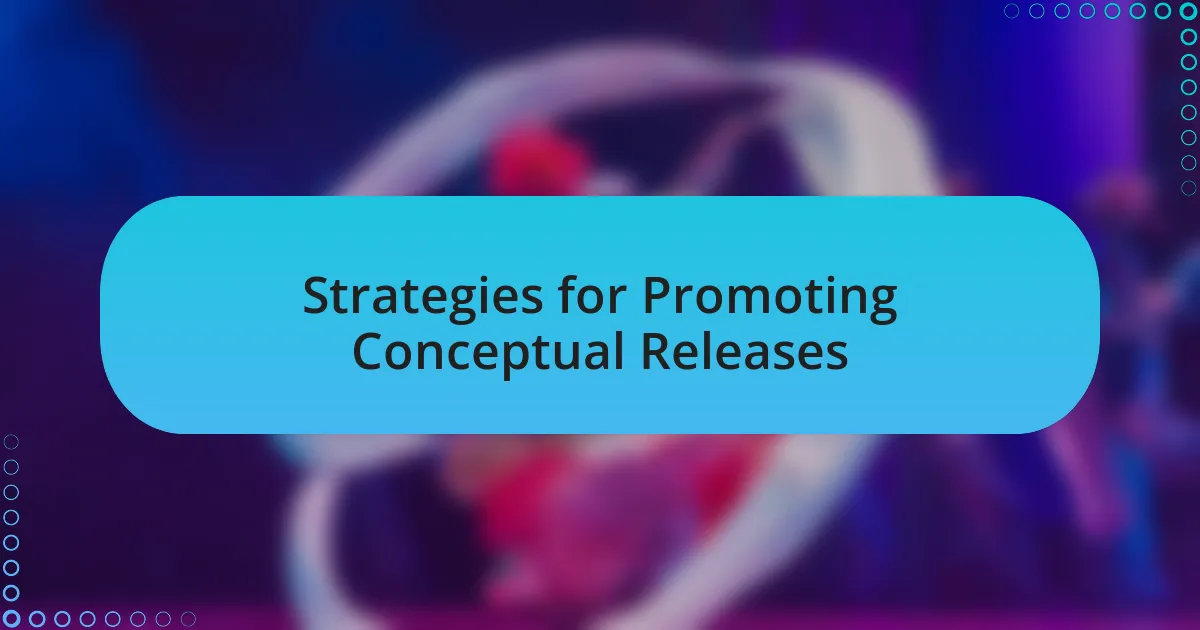
Strategies for Promoting Conceptual Releases
When it comes to promoting conceptual releases, I’ve found that storytelling can be powerful. For instance, I once saw a band use social media to share snippets of their narrative, teasing parts of the album’s story before its release. This strategy sparked curiosity and engagement among fans, turning the lead-up to the album into an interactive experience—something that kept me eagerly checking their updates.
Moreover, collaborating with visual artists can elevate a conceptual release even further. I remember a project where an artist created stunning illustrations for each track, which transformed the music into a full sensory experience. This partnership not only enriched the album’s themes but also attracted a broader audience who might not have discovered the music otherwise. Have you ever noticed how visuals can amplify your connection to a song or album? It certainly deepens the immersion for me.
Finally, hosting listening parties or virtual events can create a shared experience around the album. I vividly recall participating in an online event for a conceptual release, where the band discussed their inspirations and answered questions from fans. This not only strengthened my bond with the music but also fostered a community of listeners who were equally intrigued by the album’s themes. How often do we get the chance to engage with artists directly? It makes the entire experience feel personal and memorable.
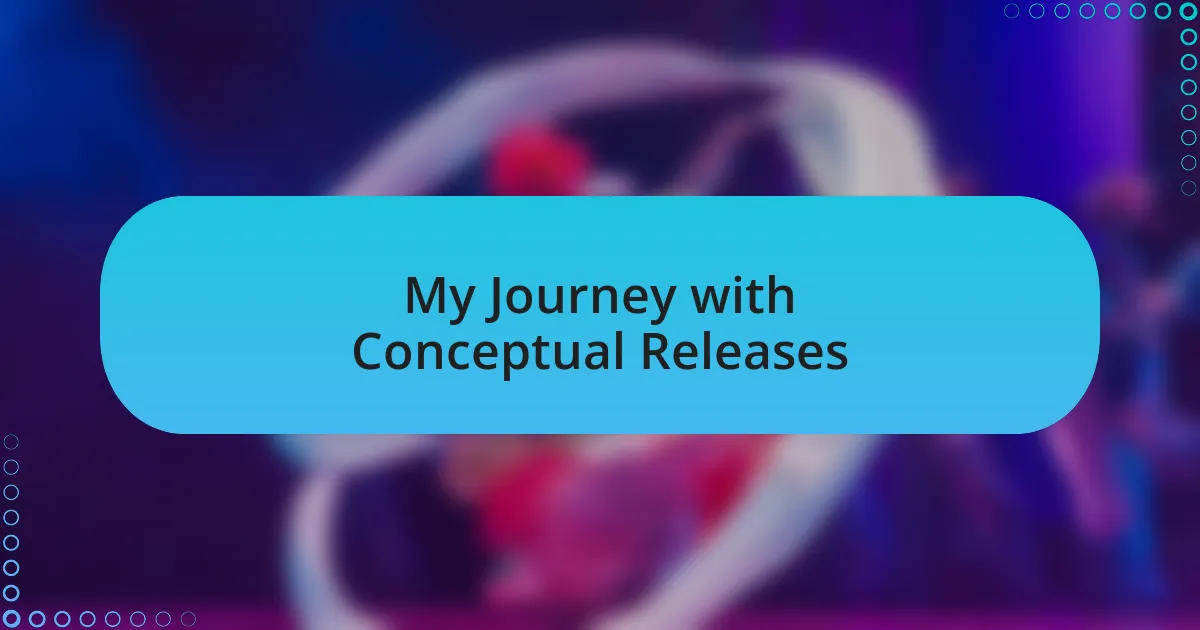
My Journey with Conceptual Releases
I remember my first exposure to a conceptual album; it was like entering another realm. The way the music unfolded a narrative pulled me in, and I found myself lost in the story the band was telling. Have you ever experienced that moment where a song resonated with you so deeply that it felt like it was written just for you? That’s what I felt, and it sparked my passion for exploring more conceptual releases.
My journey took a turning point when I started experimenting with concept-driven songwriting myself. Delving into themes that thread through a whole album allowed me to express emotions I hadn’t fully articulated before. It’s fascinating how focusing on a central idea gives music a purpose and depth that single tracks sometimes lack. The connections I forged with listeners who shared their interpretations of my work were incredibly rewarding—like having a conversation that went way beyond the surface.
The excitement of live performances truly enhances the experience of conceptual releases. One memorable night, I played an album that revolved around personal struggles and it was overwhelming to see the emotions on the audience’s faces. It made me realize how concepts become communal, where each listener can find their own meaning in the music. How amazing is it to think that our stories can intertwine through sound? It’s that kind of connection that keeps me motivated to create and share more.
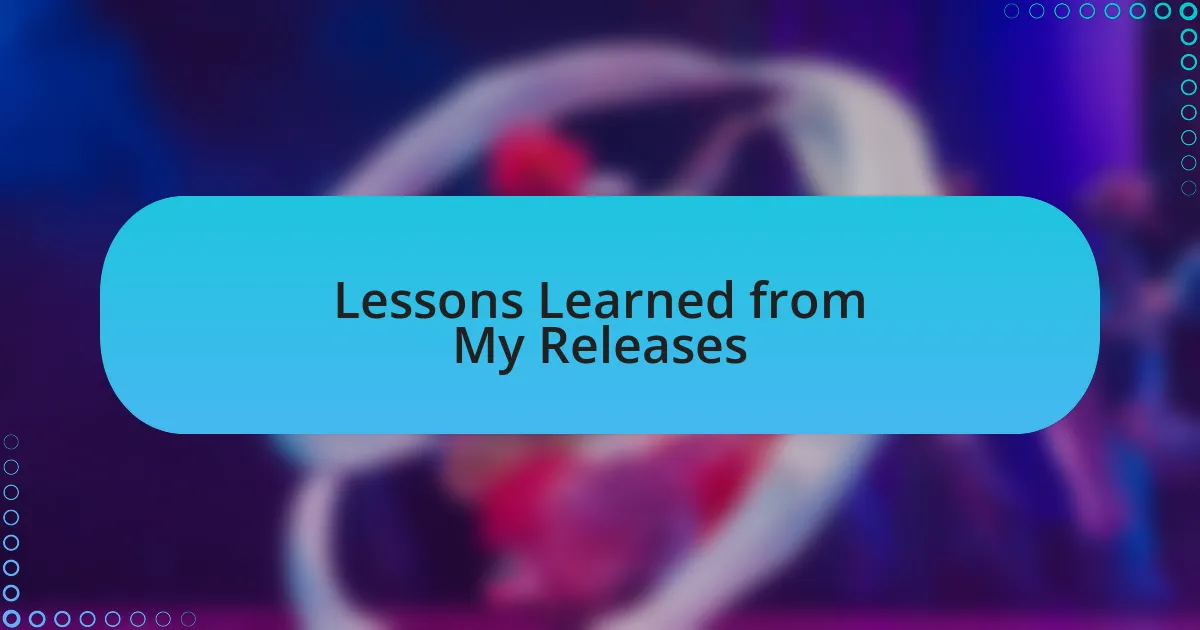
Lessons Learned from My Releases
Each release taught me the importance of vulnerability in my music. I remember pouring my heart into a track about loss—a tough experience that I felt reluctant to share. But when listeners reached out to tell me how that song helped them process their own grief, I realized that authenticity resonates far beyond the notes. Have you ever hesitated to share something personal, only to discover that it sparked a deeper connection?
Another lesson came from the meticulous planning of narrative flow. I once released an album where the tracks didn’t transition smoothly, and it disrupted the audience’s experience. I learned that each song should complement the next, almost like chapters in a book. This made me rethink how I structure my work; how do you ensure that each piece adds to the overall narrative without losing the listener’s attention?
Through my releases, I’ve also recognized the value of feedback. After one release, I hosted a listening party where fans shared their interpretations—many of which were different from my original intent. This enriched my perspective and highlighted that music can evolve through its audience. Thinking back, have you ever heard a song and felt it meant something entirely different than what the artist might have intended?
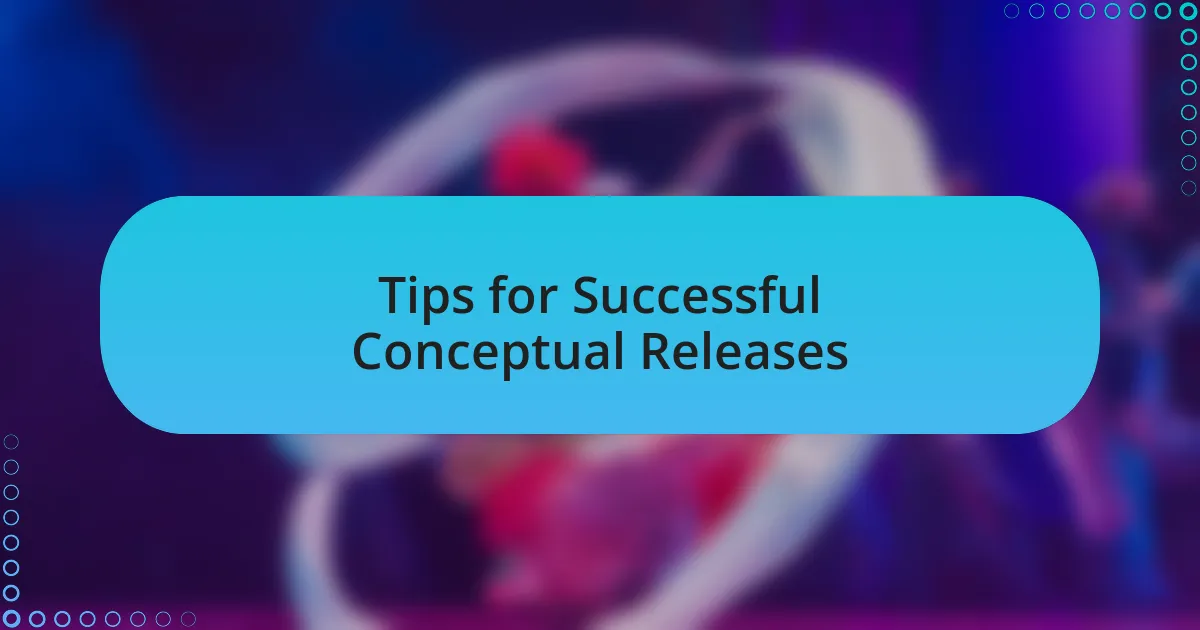
Tips for Successful Conceptual Releases
When planning a conceptual release, I found that research on your theme can elevate the entire project. For instance, while developing a concept around urban life, I spent time exploring poetry and visual art that represented the city’s hustle. This connection not only influenced my lyrics but also shaped the sonic elements, creating a cohesive experience. Have you ever woven a broader cultural narrative into your projects, only to find it deepened the resonance with your audience?
Collaboration is another key ingredient in making your conceptual release shine. I once worked closely with a visual artist to create accompanying artwork for my album, and this partnership brought fresh perspectives that enhanced my musical vision. The visuals added layers to the story I was telling, inviting listeners to engage on multiple sensory levels. Have you tried collaborating with others to enrich your creative process?
Finally, engaging your audience throughout the release can create a buzz that enhances the overall impact. I started sharing behind-the-scenes snippets and thought processes on social media leading up to the release, which built anticipation and connection. It was amazing to see fans guessing the concept and sharing their thoughts—this interaction turned my project into a collective experience. What steps do you take to involve your audience in your creative journey?